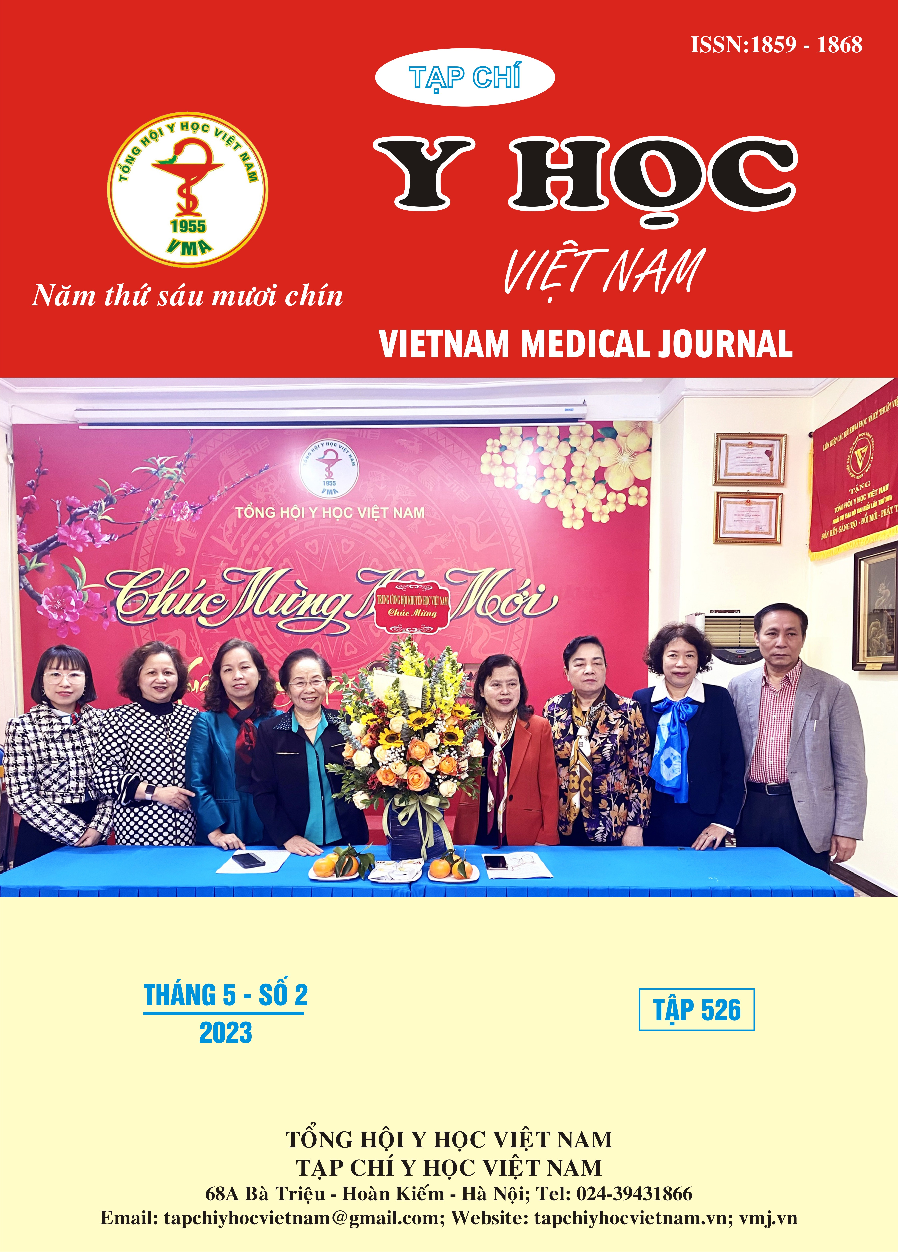EFFICIENCY OF MODEL COMBINING MILITARY AND CIVIL MEDICINE IN THE MALARIA PREVENTION IN THE CENTRAL HIGHLANDS
Main Article Content
Abstract
Objective: To evaluate the effectiveness of a model combining military and civil medicine in malaria control in the Central Highlands. Subjects and methods: The intervention study applied the model of combining military and civil medicine, including the military-civilian medical system including the border guard station, the Economic Corps Hospital, and the village and commune health clinics in the border areas and people living in communes intervened from January 1st, 2017 to December 31st, 2018. Results: Efficency reduced the rate of malaria patients in the community by 23.91%. Efficency reduced the rate of malaria parasite infection in the community by 37.58%. Efficiency in controlling malaria parasite incidence due to border exchanged 64.47%. Efficiency in controlling malaria parasite incidence due to cross-border free exchange was 27.48%. The effectiveness of health education communication, efficency to raise the community’s knowledge about malaria control was 33.13%. Efficency to improve anti-malarial practice for the community was 46.82%. Conclusion: After the intervention by the model of combining military and civil medicine, it helped to reduce the incidence of malaria, the rate of malaria parasite infection in the community. Improving knowledge and practice on malaria prevention for the community.
Article Details
Keywords
Combining military and civil medicine, malaria, Central Highlands.
References
2. Quang Huynh Hong et al (2016). Malarial health care supplies seeking behaviour of Migrant, mobile populations in targeted province in central highland, Vietnam in 2016. Journal of malaria and parasite diseases control, 6(95): 28-37.
3. Nguyễn Văn Quân (2018), Nghiên cứu thực trạng và giải pháp can thiệp phòng chống bệnh sốt rét cho vùng sốt rét lưu hành nặng có di biến động tại Bình Phước và Gia Lai, năm 2016-2018, Luận án tiến sỹ y học, Viện Sốt rét - Ký sinh trùng - Côn trùng Trung ương.
4. Nguyễn Xuân Xã (2015), Một số yếu tố liên quan đến mắc sốt rét và hiệu quả của truyền thông phòng chống sốt rét cho cộng đồng người Gia Rai huyện Đức Cơ tỉnh Gia Lai, Luận án tiến sỹ y học, Viện Sốt rét - Ký sinh trùng - Côn trùng Trung ương.
5. Đặng Việt Dũng và CS Trần Thanh Dương (2015). Đánh giá thực trạng sốt rét, kiến thức, thái độ, thực hành phòng chống sốt rét của người dân tại tỉnh Đắk Nông, Năm 2013-2014. Tạp chí phòng chống bệnh sốt rét và các bệnh ký sing trùng, 3: 18-23.
6. Quỹ Toàn cầu phòng chống sốt rét (2016). Báo cáo kết quả điều tra chỉ số Dự án Quỹ toàn cầu năm 2016. Viện Sốt rét - Ký sinh trùng - Côn trùng Trung ương.
7. Bùi Văn Quân và cs (2014). Nghiên cứu thực trạng và các yếu tố liên quan đến mắc bệnh sốt rét tại xã Đắk Nhau, huyện Bù Đăng, tỉnh Bình Phước 6 tháng đầu năm 2014. Công trình nghiên cứu khoa học báo cáo tại hội nghị toàn quốc, Chuyên ngành sốt rét - Ký sinh trùng - Côn trùng năm 2015, Nhà xuất bản Y học.


